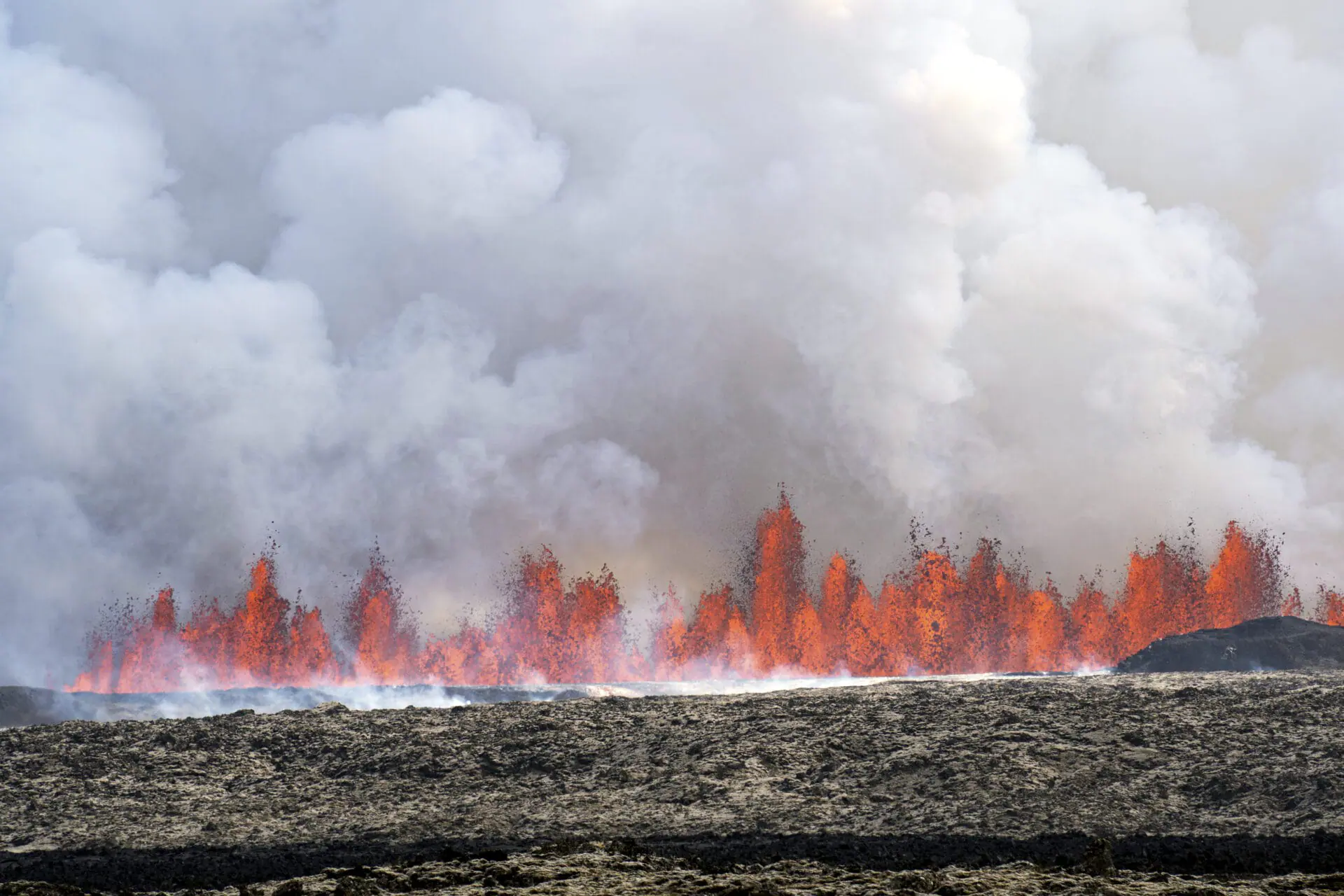Iceland volcano starts erupting again, shooting lava into the sky
GRINDAVIK, Iceland (AP) — A volcano in southwestern Iceland erupted Wednesday for the fifth time since December, spewing red lava that once again threatened the coastal town of Grindavik and led to the evacuation of the popular Blue Lagoon geothermal spa.
The eruption began in the early afternoon following a series of earthquakes north of the town of 3,800 people that was largely evacuated in December when the volcano came to life after centuries of dormancy and put on an impressive show of nature’s power.
Although activity began to calm down by early evening, the eruption was estimated to be the area’s most vigorous so far, as lava shot 50 meters (165 feet) into the sky from a fissure that grew to 3.5 kilometers (2.1 miles) in length, the Icelandic Meteorological Office said.
Barriers built to protect Grindavik deflected the flowing lava that cut off two of the three roads leading to town and was close to reaching the third.
“It’s a much larger volume that’s on the move right now headed for town,” Grindavik Mayor Fannar Jónasson told national broadcaster RUV. “The lava has already conquered (a lot).”
Workers and anyone still in town were ordered to leave earlier in the day, police said. The Blue Lagoon thermal spa — one of Iceland’s biggest tourist attractions — was evacuated before the eruption began, RUV said.
At one point, a dark plume of ash boiled up over the crater from an explosive interaction of magma hitting groundwater, scientists said.
The cloud did not rise high enough to initially pose any threat to aviation, but scientists were closely monitoring the situation, Jóhanna Malen Skúladóttir, of the Met Office, told RUV.
Grindavik, which is about 50 kilometers (30 miles) southwest of Iceland’s capital, Reykjavik, has been threatened since a swarm of earthquakes in November forced an evacuation in advance of the initial Dec. 18 eruption. A subsequent eruption overwhelmed some defensive walls and consumed several buildings.
The area is part of the Svartsengi volcanic system that was dormant for nearly 800 years before reawakening.
The volcano erupted again in February and March. The Feb. 8 eruption engulfed a pipeline, cutting off heat and hot water to thousands of people.
Iceland, which sits above a volcanic hot spot in the North Atlantic, sees regular eruptions and is experienced at dealing with them. The most disruptive in recent times was the 2010 eruption of the Eyjafjallajokull volcano, which spewed huge clouds of ash into the atmosphere and led to widespread airspace closures over Europe.
Associated Press writer Brian Melley contributed from London.
